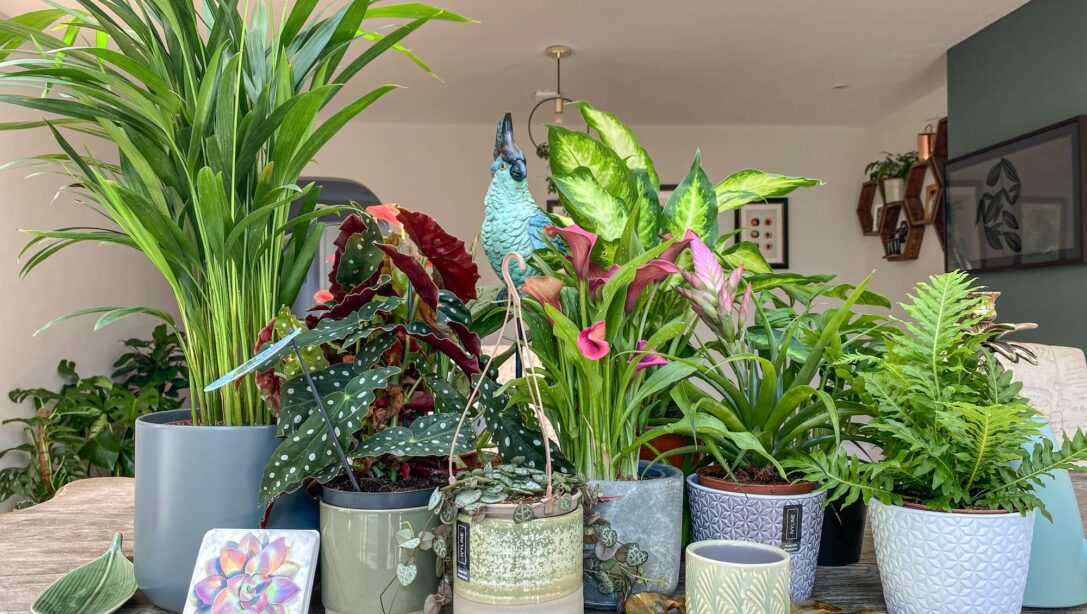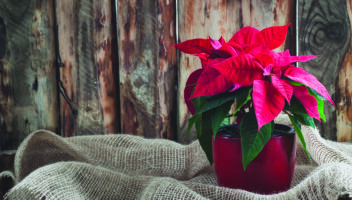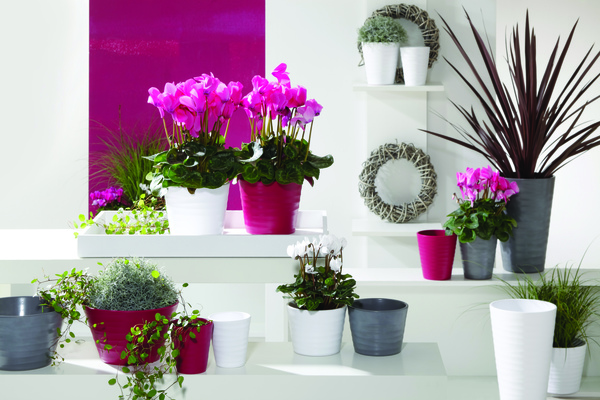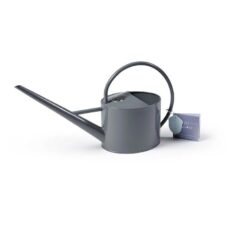In the same way that every garden plant has its preferred place – from a shady corner to the front of a border in full sunshine – houseplants need the right environment to thrive. The trick is to most closely imitate their natural environment, in terms of sunlight and water. Here, we highlight some great houseplants for positioning in any key room throughout your home.
Houseplants for the Living Room
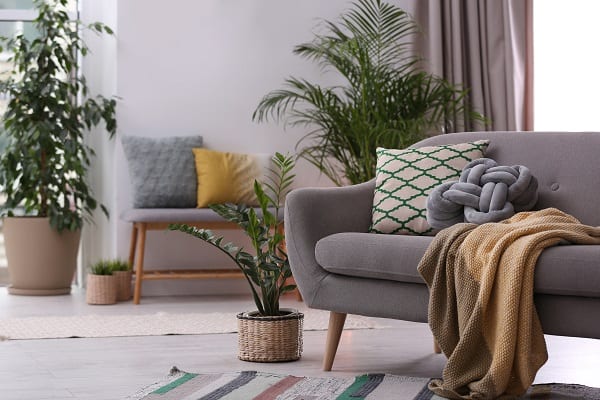
The living room is not only the place where you spend a large chunk of time, it also tends to be one of the more spacious and light rooms, particularly if your home is designed with a more ‘open plan’ style. Take note of your own situation, though – if you have a small, north-facing living room, warmth and light-loving houseplants may not fare so well.
Monstera deliciosa
Living rooms are the prime place to position larger statement foliage houseplants, where they transform corners or frame either side of a sofa. A popular houseplant for the living room is Monstera deliciosa (also known as the Swiss cheese plant). With its distinctive, large, holey leaves this is an unmistakably stylish choice. Position it in a moderately bright spot, but not in direct sunlight. It thrives in temperatures between 20 – 30C. Water so that the soil remains moist and every four times you do this ensure you feed it. During the autumn, this can be reduce to every 6 times. Ensure the soil is never waterlogged.
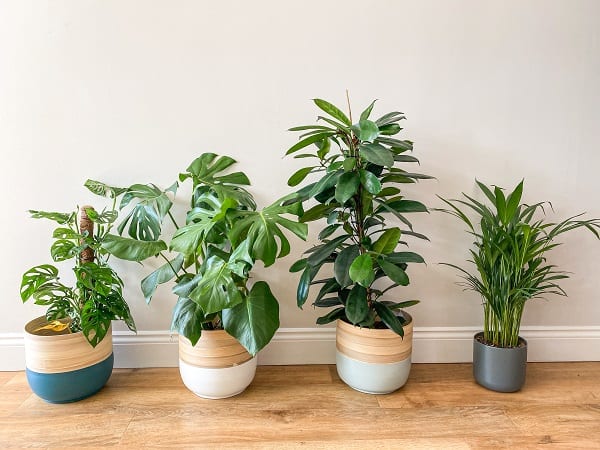
Kentia Palm
The kentia palm also makes a beautiful living room plant, and palms generally are thought to improve air quality by filtering toxins. Its foliage exudes a plume of feathers appearance. Position in a bright spot, but again not in direct sunlight – it will tolerate fairly low light levels. It grows happily in an average room temperate, between 16 – 24C. Allow the top of the soil to dry out in between watering.
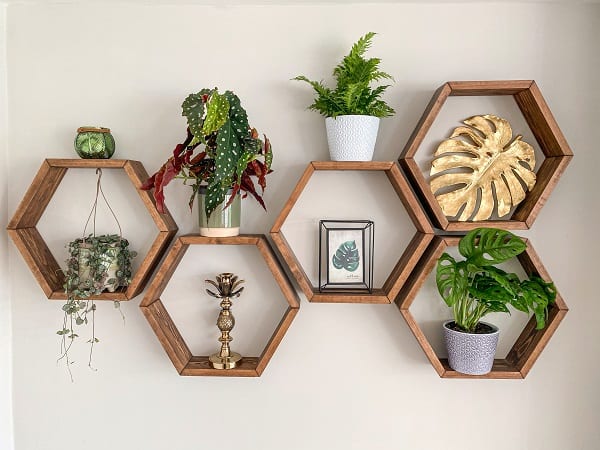
String of Hearts
If you would like to bring drama to your living room shelves, the twisted, hanging stems of Ceropegia woodii (also known as string of hearts, among other names) is hard to beat. The wiry stems are covered in heart-shaped leaves that flow like a waterfall. Native to Southern parts of Africa, it is happy positioned in a light or partially shady spot.
Three of the Best Houseplants for the Living Room
1. Howea forsteriana (Kentia palm)
2. Monstera deliciosa (Swiss cheese plant)
3. Ceropegia (String of hearts)
Houseplants for the Office
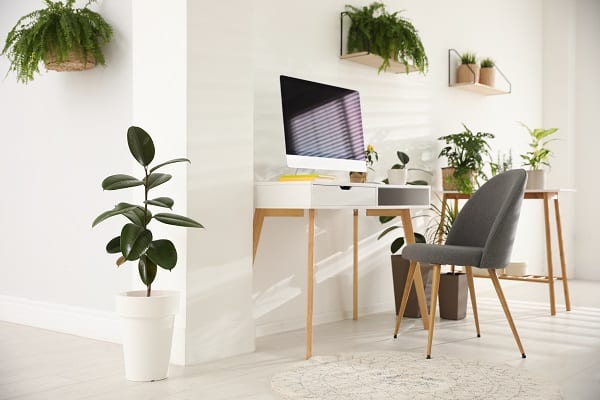
In 2020, the number of people working from home skyrocketed. In April 2020, 43% of the workforce reported they were working exclusively at home, compared to less than 5% in 2019. Whether your home office is a dedicated office space, or a desk set up in a spare bedroom, the addition of houseplants can have a calming effect. A study in Japan suggested that interacting with a houseplant on the desk for just a few minutes a day significantly decreased the anxiety levels of workers.
Smaller options
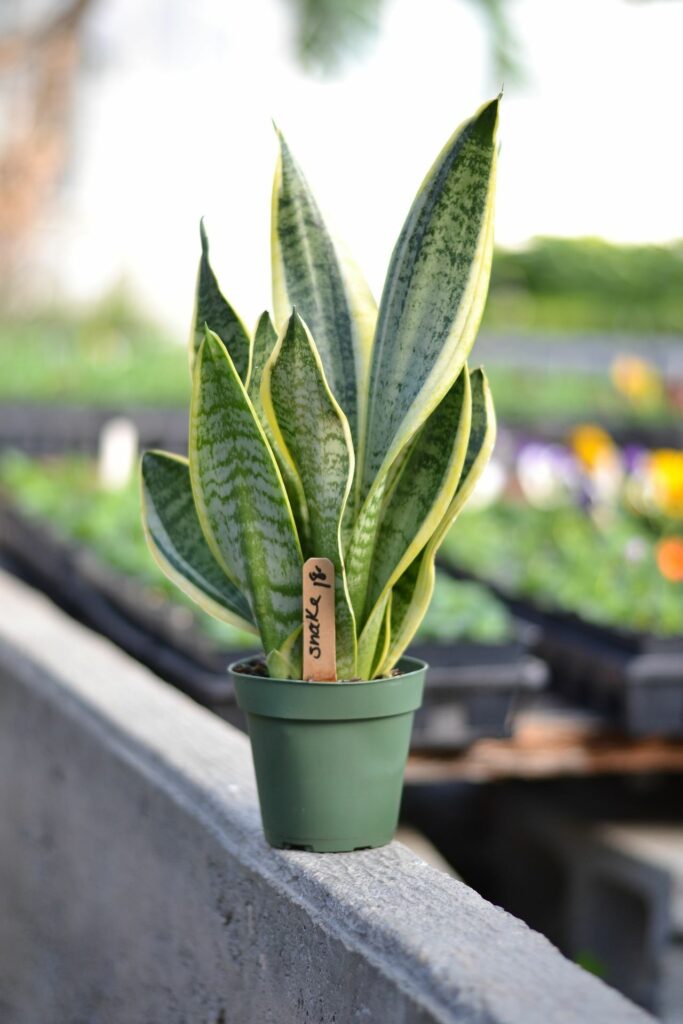
Smaller houseplants will be the best option for most offices – ones that don’t take over the desk, or can be placed on a nearby shelf. Sansevieria trifasciata, also known as snake plant, or the entertaining Mother-in-Law’s tongue, is a great choice. Native to tropical western Africa, this is a striking plant with tough, upright foliage and is near impossible to kill – it will do much better, in fact, if you neglect it. It will tolerate any average room temperature and will cope below 15C for short periods.
Aloe Vera
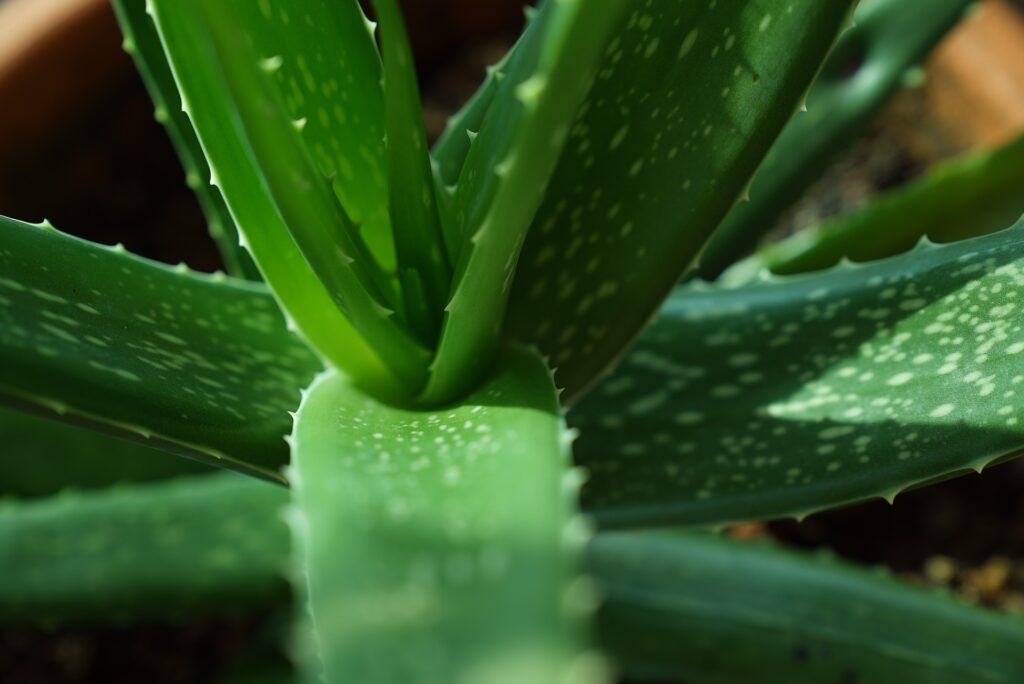
Another good, upright office companion is aloe vera. Although this would naturally grow near the equator, it is perfectly happy in the average temperature home. As aloe vera is a succulent, well able to retain water, it prefers dry and bright conditions and shouldn’t be left standing in water or it may rot. This aside, it is delightfully low-maintenance. The whole weird and wonderful range of cacti and succulents make excellent desk plants, as they are compact and resilient. A terrarium filled with a succulent or two and topped with stones and small shells fits perfectly as part of a desk design.
Calla Lilies
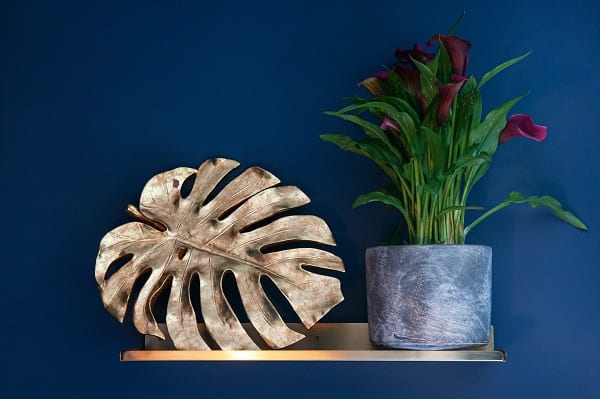
If you would like to bring some colour into your working space, calla lilies – also known as zantedeschia – offer beautiful, goblet-shaped bracts in shades from rich purple to warm orange (the coloured bracts are commonly mistaken to be the flowers, however the flowers are tiny and grow within the bracts). Native to southern Africa where it is often found naturally among the undergrowth, its preference is for a slightly shady spot in the home and for its soil to remain moist but never waterlogged. Remove any flowers that turn brown.
Three of the Best Houseplants for the Office
1. Sansevieria trifasciata (Snake plant / Mother-in-law’s tongue)
2. Aloe Vera
3. Zantedeschia (Calla lily)
Houseplants for the Bathroom
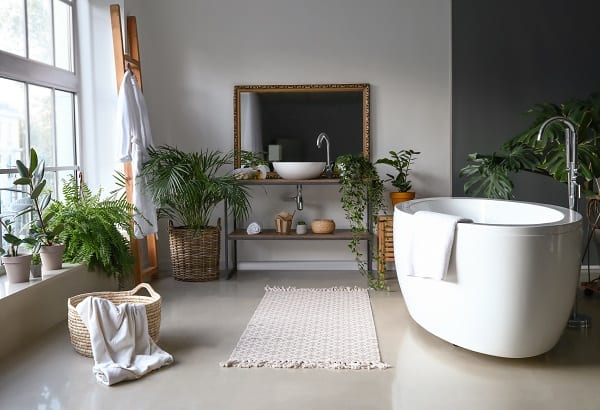
The bathroom is often one of the warmest, most humid rooms of the house and may also have some of the lowest light levels.
Orchids do well in bathrooms, as they grow naturally in tropical climates. These popular houseplants do need sunlight to promote flowering, though, so a spot on a bathroom windowsill is ideal.
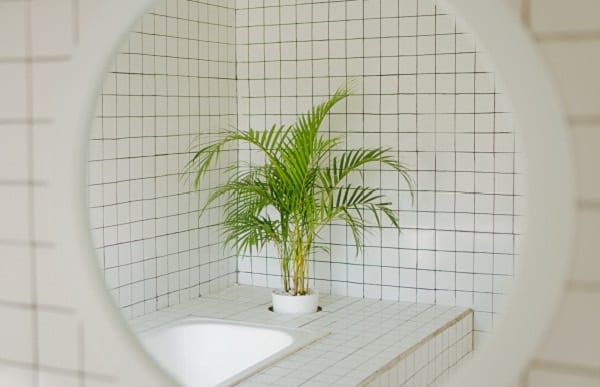
Areca
Areca palms can add a jungle feel to your bathroom along with ferns which can thrive in low light situations – emulating the shade of their native woodland. The classic Nephrolepis exaltata (Boston fern) is a good option. They do not enjoy very warm temperatures though, so if you have a particularly hot bathroom, you may want to consider alternative options.
If you are fortunate enough to have a spacious bathroom, the areca palm is a great choice to bring style with its graceful, arching foliage. Areca palms can happily tolerate most average room temperatures and are also good plants for living rooms, but their preference – this is a plant that originates from the tropics of Madagascar – is for warmth and high humidity. Water well, but do not over-water as this may kill your plant.
Ferns
Ferns are also very popular as houseplants and thrive in low light situations – emulating the shade of their native woodland. The classic Nephrolepis exaltata (Boston fern) is a good option. They do not enjoy very warm temperatures, though, so if you have a particularly hot bathroom, you may want to consider alternative options.
Peace Lily
Spathiphyllum, better known as peace lily, is another good plant for bathrooms as it originates from tropical rainforests. It is able to tolerate most light conditions and thrives in humid locations.
Three of the Best Houseplants for the Bathroom
1. Orchids
2. Ferns
3. Chrysalidocarpus lutescens (Areca palm)
Top Tips for Watering Your Houseplants
- Over or under watering plants is one of the most common reasons why houseplants (or any plants) don’t thrive.
- There isn’t a ‘one size fits all’ watering requirement for houseplants. Consider where your plant lives in the wild – rainforest natives will naturally want more water than a plant that grows in the desert.
- Generally, only water your houseplant when the top inch of soil feels dry – dipping your finger in is a simple way to test.
- If possible, water your plant in the sink (take it out of its decorative pot first, if it is in one). Once water is running out of the bottom of its growing pot, leave it to drain, then place back in its decorative pot.
- Never leave your houseplant sitting in water, or it may rot.


